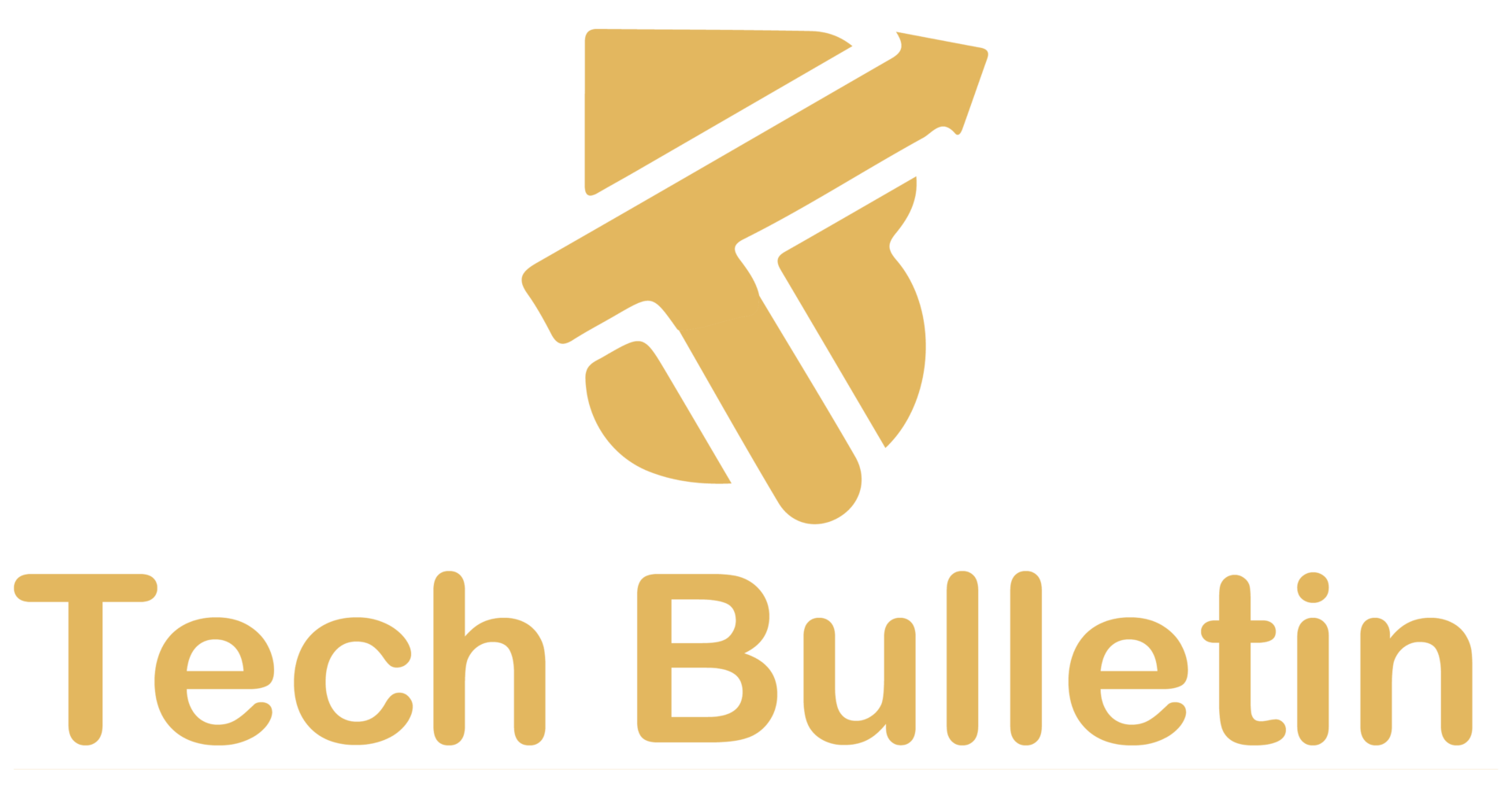How Automation and AI Are Transforming Supply Chain Management
Supply Chain Management (SCM) is the backbone of any product-based or service-oriented business. It encompasses the entire process of producing and delivering a product, from raw materials sourcing to manufacturing, distribution, and finally reaching the consumer. Think of SCM as the orchestration of countless moving parts—suppliers, manufacturers, warehouses, transportation, and retailers—all working in harmony to deliver value efficiently and timely.
In simple terms, it’s the system that ensures the right product reaches the right customer at the right time, all while minimizing costs and maximizing satisfaction. Traditionally, SCM involved manual processes, paper-based documentation, and siloed communication across different departments and partners. But as global trade expanded and customer expectations increased, traditional methods started showing cracks.
The Traditional Supply Chain Model and Its Challenges
The traditional supply chain model was linear and rigid. It often looked like a straight path from supplier to manufacturer, to distributor, to retailer, and then finally to the customer. Each link in this chain operated somewhat independently, often unaware of the real-time status of other parts.
Several challenges characterized this traditional approach:
- Lack of Real-Time Visibility: Without real-time data, companies had difficulty tracking inventory levels, shipments, and production statuses. Delays often went unnoticed until after they caused problems.
- High Operational Costs: Manual processes meant more labor, increased chances of errors, and inefficiencies. Overordering or stockouts were common due to poor demand forecasting.
- Limited Flexibility: The supply chain struggled to adapt quickly to changes such as sudden demand spikes, supplier disruptions, or transportation delays.
- Communication Gaps: Different departments and external partners often worked in silos with inconsistent data, leading to misalignments.
- Environmental Impact: Inefficient logistics and overproduction contributed to excessive waste and carbon emissions.
In an era where customers expect instant deliveries and personalized products, these traditional supply chains struggled to keep pace.
The Need for Digital Transformation in Supply Chains
With the rapid advancement of technology, the limitations of traditional supply chains became glaringly apparent. Digital transformation emerged as a necessary evolution to overcome these challenges. But what does digital transformation mean in this context?
It’s about integrating digital technology into all aspects of the supply chain to create smarter, more connected, and more flexible operations. This includes automating repetitive tasks, leveraging data analytics for better decision-making, and using AI to predict and respond to market dynamics proactively.
The pandemic further accelerated this need, exposing the vulnerabilities in global supply chains. Suddenly, businesses needed real-time visibility, agility, and resilience more than ever.
Digital transformation enables companies to:
- Gain end-to-end visibility across their entire supply chain.
- Respond faster to disruptions or market changes.
- Optimize inventory and reduce waste.
- Enhance customer satisfaction through faster and more reliable deliveries.
Automation and Artificial Intelligence are the twin pillars driving this transformation, fundamentally reshaping how supply chains operate.
The Role of Automation in Modern Supply Chains
Automation in supply chain management refers to using technology to perform tasks without human intervention or with minimal manual input. It’s about replacing repetitive, rule-based, and time-consuming activities with machines, software, and robotics to increase speed, accuracy, and efficiency.
Automation can apply to a wide range of supply chain functions—from warehousing and inventory management to order processing and transportation.
Think of automated guided vehicles (AGVs) navigating warehouse floors, robotic arms picking and packing orders, or software bots processing invoices and purchase orders. These are all examples of automation in action.
Automation doesn’t mean eliminating human jobs; instead, it frees up human workers to focus on higher-value tasks like strategic planning, relationship management, and problem-solving.
Key Automation Technologies: Robotics, IoT, and RPA
Several cutting-edge technologies are powering automation in supply chains today:
- Robotics: Robots are revolutionizing warehousing and manufacturing. Automated picking robots speed up order fulfillment, reduce errors, and work tirelessly 24/7. Collaborative robots (cobots) work alongside humans, enhancing productivity without replacing jobs.
- Internet of Things (IoT): IoT devices—smart sensors, RFID tags, GPS trackers—collect real-time data on inventory levels, shipment locations, equipment status, and environmental conditions. This data feeds automated systems to trigger alerts, reorder stock, or reroute shipments.
- Robotic Process Automation (RPA): RPA involves software bots that automate repetitive digital tasks like data entry, invoice processing, and order tracking. These bots integrate with existing enterprise systems, streamlining workflows and reducing errors.
By combining these technologies, companies build smart, automated supply chains that operate faster and with greater precision.
Benefits of Automation for Efficiency and Accuracy
The benefits of automation in supply chain management are significant and measurable:
- Increased Speed: Automation accelerates processes like order picking, packing, and shipping, reducing cycle times and enabling faster deliveries.
- Improved Accuracy: Robots and software bots are less prone to errors than humans, reducing mistakes in order fulfillment, invoicing, and inventory counts.
- Cost Savings: By automating manual tasks, companies reduce labor costs and minimize costly errors such as overstocking or shipping wrong items.
- Enhanced Scalability: Automated systems can easily scale up during peak seasons without the need to hire and train extra staff.
- Better Inventory Management: Real-time data from IoT sensors allows automated reorder triggers, preventing stockouts or excess inventory.
- 24/7 Operations: Automation enables round-the-clock operations without fatigue or downtime, improving supply chain responsiveness.
Automation isn’t just about efficiency—it’s about building supply chains that are agile, reliable, and responsive to changing market needs.
Understanding AI and Machine Learning in Supply Chains
Artificial Intelligence (AI) refers to computer systems designed to perform tasks that typically require human intelligence, like recognizing patterns, learning from data, and making decisions. In supply chains, AI uses massive volumes of data to predict trends, optimize routes, and automate complex decision-making processes.
Machine Learning (ML), a subset of AI, allows systems to learn and improve over time without explicit programming. For example, ML models can analyze historical sales data to forecast future demand, detect anomalies in supply chain operations, or suggest optimal inventory levels.
AI’s ability to process and interpret vast, complex datasets far exceeds human capability. It enables supply chains to shift from reactive problem-solving to proactive, predictive management—catching issues before they happen and seizing new opportunities faster.
AI Applications: Demand Forecasting, Inventory Management, and Predictive Maintenance
The potential Manufacturing applications of AI in supply chain management are vast, but some of the most impactful include:
- Demand Forecasting: Accurate demand forecasting is crucial for balancing supply and demand. Traditional methods often rely on static historical data and simple trend analyses. AI, however, can incorporate multiple data sources—including weather patterns, social media trends, market news, and economic indicators—to generate dynamic and highly accurate forecasts. This helps reduce stockouts and excess inventory, saving costs and improving customer satisfaction.
- Inventory Management: AI-powered inventory systems continuously analyze sales velocity, supplier lead times, and storage capacities to optimize stock levels. These systems automatically adjust reorder points and quantities in real-time, ensuring inventory is always aligned with actual demand and operational capacity.
- Predictive Maintenance: AI can monitor equipment performance through IoT sensors, analyzing vibration, temperature, or usage data to predict when machinery is likely to fail. This allows companies to schedule maintenance proactively, reducing downtime and repair costs.
These applications not only improve operational efficiency but also enhance the resilience and responsiveness of supply chains to disruptions.
How AI Improves Decision-Making and Reduces Costs
One of AI’s greatest strengths is its ability to support complex decision-making by uncovering patterns and insights invisible to humans. Here’s how AI enhances decisions and cuts costs in supply chains:
- Real-Time Analytics: AI systems analyze real-time data from multiple sources to provide actionable insights quickly. Managers can respond instantly to shifting conditions, like a sudden supplier delay or transport disruption, minimizing impact.
- Scenario Planning: AI can simulate multiple “what-if” scenarios, helping decision-makers evaluate the consequences of different choices. For example, it can assess how a supplier outage affects production timelines or which shipping routes minimize costs under fluctuating fuel prices.
- Cost Optimization: By optimizing routes, reducing inventory waste, and improving demand forecasts, AI helps cut unnecessary expenses across the supply chain. It also identifies inefficiencies in procurement or production processes, guiding improvements.
- Enhanced Customer Service: AI-driven personalization allows supply chains to tailor products and delivery schedules to individual customer preferences, increasing loyalty and competitive advantage.
Ultimately, AI transforms supply chain management from a reactive, cost-heavy function into a strategic asset driving innovation and growth.
Integration of AI and Automation: Synergizing for Optimal Supply Chain Performance
Combining Robotics with AI for Smarter Operations
While automation handles routine tasks, integrating AI brings intelligence to those processes. For instance, robotic systems powered by AI can adapt to changing conditions without manual reprogramming.
In warehouses, AI-driven robots can identify items by image recognition, navigate dynamic environments safely, and prioritize orders based on urgency. Instead of following fixed routes, they optimize their movements continuously, avoiding bottlenecks and enhancing throughput.
This fusion of AI and robotics creates flexible, self-learning systems that improve efficiency while reducing human error and fatigue. It’s like giving robots the brains to think on their feet, not just follow pre-set instructions.
Real-time Data Analytics and AI-driven Insights
Real-time data is the fuel that powers AI and automation in supply chains. Sensors, RFID tags, GPS trackers, and enterprise systems generate constant streams of information—everything from inventory levels to vehicle locations and environmental conditions.
AI platforms process this data instantly, providing predictive analytics, anomaly detection, and automated alerts. Supply chain managers gain unprecedented visibility into every step of the journey, enabling smarter, faster decisions.
For example, if a shipment faces an unexpected delay, AI can reroute other deliveries, adjust inventory allocations, and notify customers—all autonomously. This real-time adaptability significantly reduces risk and improves customer satisfaction.
Case Studies of Companies Successfully Implementing AI and Automation
- Amazon: Amazon’s fulfillment centers are a prime example of AI and automation synergy. Robots transport shelves of products to human pickers, while AI algorithms optimize inventory placement, route planning, and demand forecasting. This results in lightning-fast order processing and delivery.
- Walmart: Walmart uses AI-powered predictive analytics to forecast demand more accurately and adjust inventory levels dynamically across thousands of stores. Their automation extends to warehouses, where robotic arms assist with sorting and packing.
- Maersk: The global shipping giant leverages AI and automation for route optimization, predictive maintenance of ships, and automated documentation processing. This improves fuel efficiency, reduces delays, and streamlines customs procedures.
These examples show how embracing AI and automation leads to operational excellence and competitive advantage.
Challenges and Risks in Implementing Automation and AI
Technological Barriers and Integration Issues
Despite its benefits, integrating AI and automation into existing supply chains is complex. Legacy systems often lack compatibility with modern technologies, requiring costly upgrades or complete overhauls.
Companies may face challenges in data standardization, ensuring clean, structured data to feed AI models. Furthermore, integration between multiple platforms, ERP, warehouse management,and transportation management systems requires meticulous planning and skilled IT teams.
Overcoming these barriers demands significant investment and strategic foresight.
Data Privacy and Security Concerns
Supply chains increasingly depend on sensitive data, from supplier contracts to customer information. Integrating AI and IoT devices expands the attack surface for cyber threats.
Companies must implement robust cybersecurity measures to protect data integrity and privacy. Regulatory compliance, especially across global operations, adds another layer of complexity.
Impact on Workforce and Reskilling Needs
Automation and AI can displace certain manual roles, sparking concerns about job losses. However, they also create new opportunities requiring advanced skills in data analytics, AI oversight, and system maintenance.
Businesses need to invest in workforce reskilling programs to help employees transition into these new roles. Emphasizing collaboration between humans and machines fosters a balanced, productive work environment.
The Future of Supply Chain Management with AI and Automation
The future of supply chain management is shaping up to be even more innovative and interconnected thanks to cutting-edge technologies:
- Autonomous Vehicles: Self-driving trucks, drones, and delivery robots promise to revolutionize logistics. Autonomous vehicles can operate around the clock without fatigue, reducing labor costs and minimizing human error. These vehicles will enhance last-mile delivery efficiency, especially in urban and hard-to-reach areas, speeding up delivery times and lowering costs.
- Blockchain Technology: Blockchain offers a decentralized, tamper-proof ledger that enhances transparency and trust across the supply chain. It allows stakeholders to track the provenance of goods, verify certifications, and reduce fraud. This technology is particularly valuable in industries like food, pharmaceuticals, and luxury goods where authenticity and safety are critical.
- Digital Twins: A digital twin is a virtual replica of a physical supply chain, including facilities, vehicles, and inventory. By simulating operations in a digital environment, companies can predict potential issues, optimize workflows, and test new strategies without disrupting real-world processes. Digital twins enable proactive management and continuous improvement.
These emerging trends will complement AI and automation, driving supply chains towards unprecedented efficiency, resilience, and sustainability.
The Growing Importance of Sustainability and Green Supply Chains
Sustainability is no longer optional; it’s a business imperative. Consumers, regulators, and investors demand eco-friendly practices, forcing companies to rethink their supply chains.
AI and automation play a vital role in creating green supply chains by:
- Optimizing Routes: AI algorithms reduce fuel consumption and emissions by planning the most efficient shipping routes.
- Reducing Waste: Automated inventory management prevents overproduction and spoilage, cutting down material waste.
- Energy Efficiency: Smart warehouses powered by AI control lighting, heating, and cooling systems to minimize energy use.
- Sustainable Sourcing: AI helps verify supplier compliance with environmental standards through data analysis and blockchain verification.
Building sustainable supply chains not only benefits the planet but also enhances brand reputation and long-term profitability.
Preparing for a Fully Automated, AI-Driven Supply Chain Ecosystem
Looking ahead, supply chains will evolve into fully connected, intelligent ecosystems where AI and automation drive nearly every aspect of operations. To prepare for this future, companies must:
- Invest in scalable technology infrastructure that supports data integration and advanced analytics.
- Foster a culture of innovation that embraces continuous learning and digital experimentation.
- Build strategic partnerships with technology providers, startups, and academic institutions to stay ahead of technological advances.
- Focus on human-machine collaboration by training employees to work alongside AI systems and robotics effectively.
The supply chains of tomorrow will be resilient, agile, and customer-centric, powered by data, intelligence, and automation.
Practical Steps for Businesses to Adopt AI and Automation in Supply Chains
Assessing Readiness and Setting Clear Goals
Before diving into AI and automation, companies should conduct a thorough assessment of their current supply chain capabilities. Key questions to consider include:
- Where are the biggest inefficiencies or pain points?
- What data do we currently have, and how reliable is it?
- What are our strategic priorities—speed, cost reduction, sustainability?
Setting clear, measurable goals helps focus technology investments and measure progress.
Choosing the Right Technologies and Partners
Not all AI and automation solutions are one-size-fits-all. Businesses must carefully evaluate technologies that align with their size, industry, and specific needs. It’s crucial to:
- Pilot new tools on a small scale before full deployment.
- Partner with trusted technology providers offering ongoing support and customization.
- Ensure systems are scalable and interoperable with existing platforms.
Training and Change Management for Smooth Transitions
Successful adoption depends heavily on people. Employees need training to understand and operate new systems confidently. Change management strategies should include:
- Clear communication about the benefits and impacts of automation and AI.
- Involving staff in the transition process to reduce resistance.
- Providing continuous learning opportunities to develop new skills.
This human-centric approach ensures technology empowers rather than alienates the workforce.
Conclusion
Automation and AI are no longer futuristic concepts but present-day realities reshaping supply chain management across industries. They bring remarkable efficiencies, real-time visibility, and predictive power that traditional methods cannot match. While challenges remain, such as integration complexities and workforce transitions, the benefits far outweigh the hurdles.
By embracing AI and automation thoughtfully, businesses can build supply chains that are faster, smarter, more resilient, and sustainable. This transformation not only drives cost savings but also unlocks new competitive advantages in an increasingly complex global market.
The future belongs to those who innovate boldly and adapt quickly, leveraging the incredible potential of automation and AI to redefine supply chain excellence.
FAQs
- What are the main benefits of using AI in supply chain management?
AI improves demand forecasting, inventory management, predictive maintenance, and decision-making, leading to reduced costs, enhanced efficiency, and better customer service. - How does automation impact the workforce in supply chains?
Automation can displace some manual tasks but also creates new jobs requiring advanced skills. Workforce reskilling and collaboration with machines are essential for a smooth transition. - Is blockchain widely used in supply chains today?
While still emerging, blockchain is gaining traction for improving transparency and traceability, especially in food, pharmaceuticals, and luxury goods sectors. - Can small businesses benefit from AI and automation in supply chains?
Yes, scalable and affordable AI and automation tools are becoming accessible to small and medium enterprises, helping them compete more effectively. - What are the biggest challenges in implementing AI and automation?
Technological integration, data quality, cybersecurity, cost, and workforce adaptation are major challenges businesses face during implementation.






